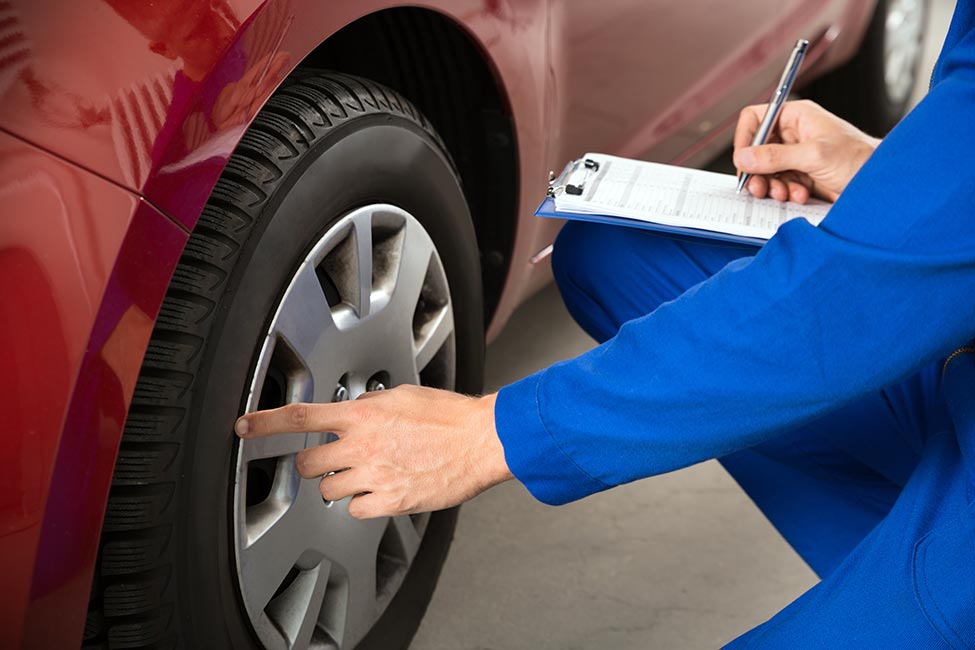Everything you need to know about tyre regulations
Everything you need to know about tyre regulations

©AndreyPopov/iStock
Since tyres are in direct contact with the road, they are subject to specific rules and, therefore, crucial to your safety. Read on to find out what you need to know and what risks you run if you fail to comply.<br />
Tyre regulations : what are the requirements ?
Tyres are subject to a set of regulations that must be complied with. Otherwise, you will be fined. The main aim is to increase your safety. Here are the rules you need to know :
Tread depth
Legally, all cars on UK roads must have a minimum tread depth of 1.6 mm. It should be a complete band around the whole tyre, and there should be no points where the tread is less than this measurement.
Maintaining a greater tread depth is recommended for performance and grip. When your tyres reach 1.6 mm, it is time to buy new ones.
Marking
Speed and load indexes on the tyre tell you the maximum speed and load your tyres can handle. You must use the minimum load values given in the vehicle’s manual — as described by the manufacturer. Do not use a lower value. The speed index must match the maximum speed of the vehicle.
Mounting
- It is forbidden to fit tyres with different thread patterns (radial or cross-ply) on the same axel of a vehicle.
- The dimensions indicated on the tyre must be appropriate for the vehicle.
Tyre condition
The tyres must be in good condition and free of lumps, bumps and other noticeable imperfections. Any cuts in the tyre cannot exceed 25 mm or a tenth of the total width of the tyre. The tyre should be inflated in line with the recommended tyre pressure specified by the vehicle’s manufacturer.
Spare tyres
Spare tyres are not a legal requirement in the UK. And even if you have one, it does not have to meet regulations as long as it is not being used. However, once fixed to a wheel and used, it must meet roadworthiness requirements.
Top Tip : A garage usually disposes of old tyres when you get new ones. Unwanted tyres can be taken to local recycling centres.
Risks in the event of non-compliance
If you have the wrong tyres or they do not meet the accepted levels of roadworthiness, there are several implications. If the police inspect your car, you could be fined or have the car towed. You may be issued an on-the-spot Fixed Penalty Notice or even be prosecuted. A defective tyre can lead to fines of up to £2,500 and 3 penalty points on your licence. These charges apply per tyre.
If you do not respect the regulations on tyres, you put your safety and that of other road users at risk. If tyres are worn, their grip is considerably reduced, especially on wet surfaces or in the event of snow. This results in longer braking distances. Defective tyres are also susceptible to sudden bursts or punctures.
In snow, unsuitable tyres reduce the vehicle’s grip and mobility. This can lead to slipping or getting stuck on the side of the road. So, ensuring your car is properly equipped according to the season and where you live is important.
Check your tyre pressure at least once a month : under-inflated or over-inflated tyres cause premature wear and deformation. In addition to the risk of aquaplaning, incorrect tyre pressure increases braking distances and reduces road holding and driving precision.
Whether for safety or to avoid fines, tyre regulation compliance is essential. So, remember to check the condition of your tyres regularly, and don’t hesitate to ask a specialist for advice.
Feel like getting away from it all?
See our suggestions for novel trips and must-see places to visit near your home or holiday destination.